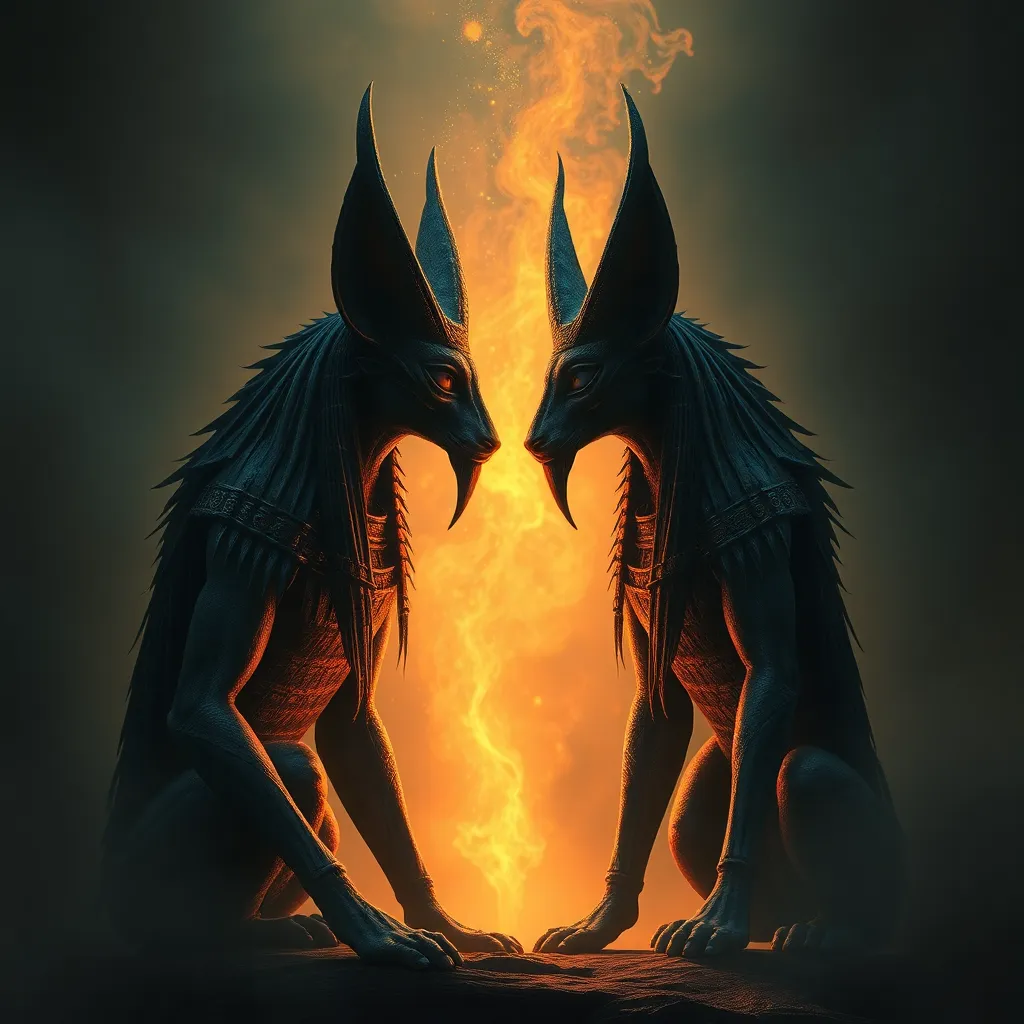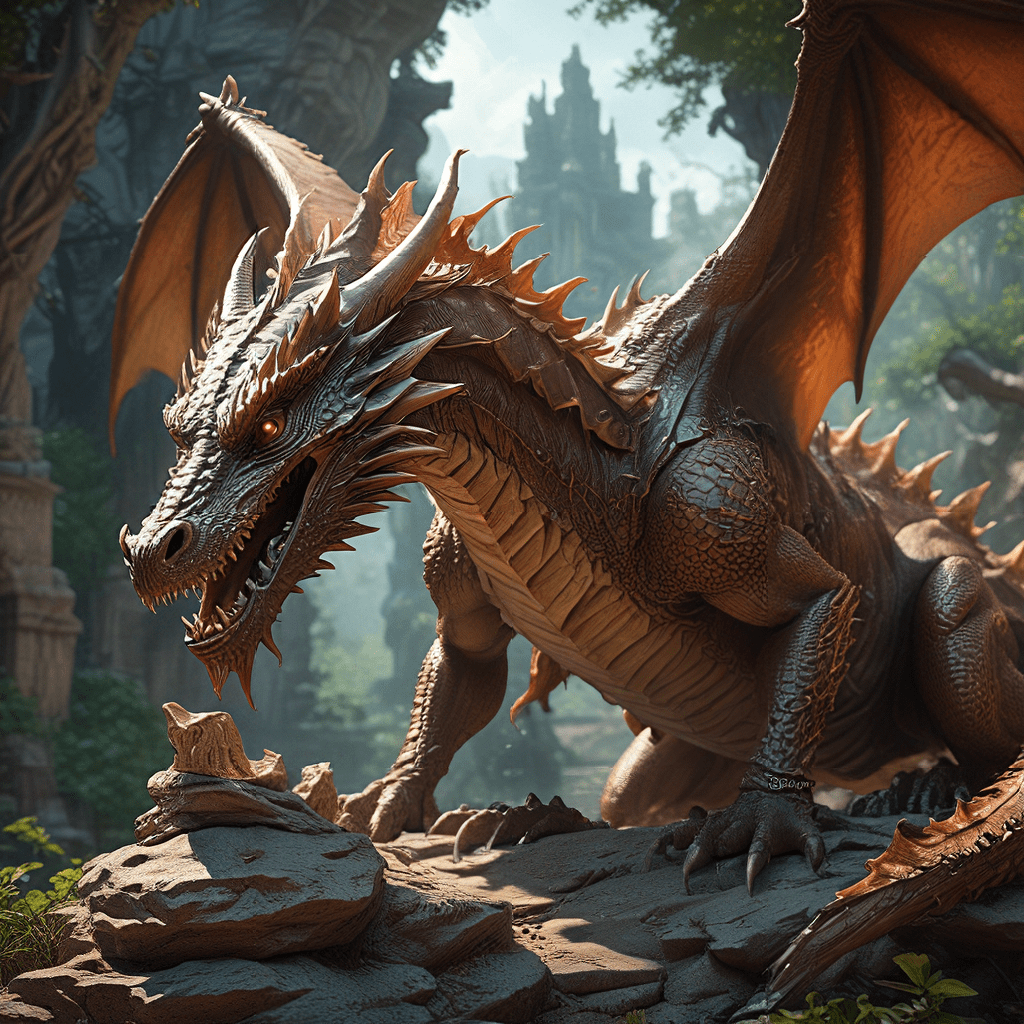Anubis and the Myth of Set: The God of Chaos and the Jackal God’s Opposition
I. Introduction
Ancient Egyptian mythology is a rich tapestry of gods, goddesses, and cosmic narratives that explain the nature of existence, death, and the afterlife. Among the pantheon, two deities stand out for their contrasting roles: Anubis, the jackal-headed god associated with mummification and the afterlife, and Set, the god of chaos, storms, and disorder. The relationship between Anubis and Set is crucial in understanding the mythological narrative of Ancient Egypt, as it symbolizes the eternal struggle between order and chaos.
II. The Origins of Anubis
A. Anubis’s Role in Ancient Egyptian Religion
Anubis was revered as the god of funerary rites and the protector of the dead. His primary function was to oversee the process of mummification and guide souls through the afterlife. Often depicted as a black jackal or a man with a jackal head, Anubis embodied the mysteries of death and the journey beyond.
B. Symbolism of the Jackal and Its Significance in Funerary Practices
The jackal, an animal often found in cemeteries, symbolized the connection between the living and the dead. In ancient Egypt, black was considered the color of fertility and rebirth, representing the regenerative qualities of the Nile. Anubis’s association with the jackal emphasizes his role as a guardian of the dead, ensuring safe passage to the afterlife.
C. Anubis as the Protector of the Dead and Guide to the Afterlife
Anubis’s involvement in the weighing of the heart ceremony was pivotal in determining a soul’s fate. He would weigh the heart of the deceased against the feather of Ma’at, the goddess of truth and justice. A balanced scale meant the soul could enter the eternal paradise, while an unbalanced scale indicated a fate of destruction.
III. Understanding Set: The God of Chaos
A. Background of Set in Egyptian Mythology
Set, also known as Seth, is often depicted as a mysterious figure, sometimes portrayed with a unique animal head that combines features of various creatures. He is associated with chaos, storms, and violence, representing the disruptive forces of nature.
B. Attributes and Symbols Associated with Set
- Chaos and disorder
- Storms and desert winds
- Red color, symbolizing chaos and destruction
- The Set animal, a creature that embodies the unknown
C. Set’s Role as the Embodiment of Chaos and Disorder
Set’s mythology often portrays him in conflict with other gods, such as Osiris and Horus. He is seen as a necessary force, embodying the chaos that exists in the world, which must be balanced with the order represented by other deities. This duality emphasizes the complexity of existence in Egyptian thought.
IV. The Mythological Conflict: Anubis vs. Set
A. Overview of Key Myths Involving Anubis and Set
The conflicts between Anubis and Set manifest in various myths. One significant story involves Set’s murder of Osiris, which leads to a power struggle that Anubis aids Horus in resolving. Although Anubis does not directly confront Set, his actions support the restoration of order.
B. The Significance of Their Oppositional Roles
Anubis and Set’s opposition symbolizes the larger battle between life and death, order and chaos. Anubis represents the orderly transition of souls into the afterlife, while Set embodies the chaotic forces that can disrupt this process. Their dynamic relationship illustrates the importance of balance within the universe.
C. Analysis of the Themes of Order vs. Chaos in Their Narratives
The myths surrounding Anubis and Set explore themes of duality, illustrating that chaos is an intrinsic part of existence. The interplay between Anubis’s protective nature and Set’s chaotic influence reflects the belief that both forces are necessary for the maintenance of cosmic balance.
V. The Impact of Their Conflict on Ancient Egyptian Society
A. How the Myth Influenced Religious Practices and Beliefs
The narratives involving Anubis and Set shaped religious practices in Ancient Egypt. Anubis’s role in funerary rites emphasized the importance of proper burial and the belief in an afterlife, while Set’s chaos was acknowledged in rituals that sought to ward off disorder.
B. The Role of Anubis and Set in Funerary Rites and Rituals
Anubis’s influence is evident in various funerary customs, including mummification and the placement of protective amulets. Set, on the other hand, was sometimes invoked in rituals to ensure protection against chaos and disorder during the burial process.
C. Cultural Representations in Art and Literature
Artistic depictions of Anubis and Set can be found in tomb paintings, sculptures, and papyrus scrolls. These representations often highlight their contrasting roles, with Anubis portrayed as a benevolent guide and Set as a chaotic force. Literature from this era often reflects the themes of their myths, reinforcing their significance in cultural consciousness.
VI. Anubis and Set in Modern Interpretations
A. The Resurgence of Interest in Egyptian Mythology in Popular Culture
In contemporary times, there has been a renewed interest in Egyptian mythology, with Anubis and Set frequently appearing in books, movies, and video games. This resurgence has introduced these ancient deities to new audiences, sparking curiosity and fascination.
B. How Anubis and Set Are Depicted in Contemporary Media
- Films often portray Anubis as a dark, enigmatic figure or a protector of souls.
- Set is commonly depicted as a villain or chaotic force, representing the struggle against order.
- Video games and literature explore their narratives, often reimagining their conflicts in modern contexts.
C. Modern Interpretations of Their Conflict and Its Relevance
Contemporary interpretations of the conflict between Anubis and Set often reflect modern themes of duality, balance, and the struggle between good and evil. This timeless narrative resonates with audiences, illustrating the enduring relevance of these ancient myths.
VII. The Legacy of Anubis and Set
A. The Influence of Their Myths on Subsequent Belief Systems
The myths of Anubis and Set have left a lasting legacy on various belief systems, influencing later religious thought and mythology across cultures. Their stories continue to be referenced in discussions about life, death, and the balance of forces in the universe.
B. Their Roles in Archaeological Discoveries and Historical Studies
Archaeological findings, including tombs and inscriptions, have provided insight into the worship of Anubis and Set. These discoveries shed light on ancient Egyptian beliefs and practices, enriching our understanding of their mythological framework.
C. Ongoing Fascination with Their Characters in the Context of Mythology
The fascination with Anubis and Set persists in modern culture, inspiring artists, writers, and scholars to explore their narratives. This ongoing intrigue underscores their importance in the broader landscape of mythology and human understanding.
VIII. Conclusion
In conclusion, Anubis and Set hold significant places in Ancient Egyptian mythology, representing the duality of chaos and order. Their contrasting roles highlight the complexities of life and death, as well as the balance required to navigate the human experience. The enduring legacy of these deities in modern contexts reflects their timeless appeal and the universal themes they embody, reminding us of the intricate dance between creation and destruction that defines existence.



